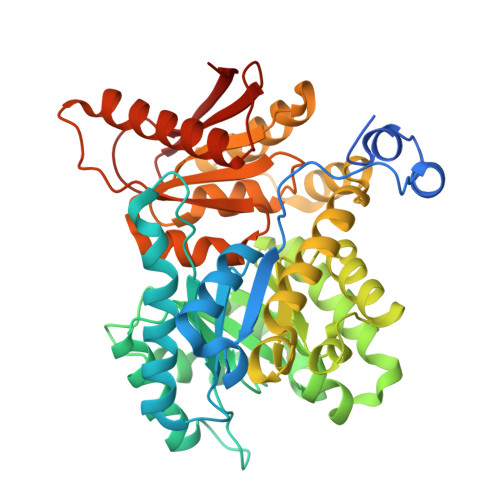Fluorescent binding assay for allosteric ligands of liver pyruvate kinase.
Nilsson, O., Bogucka, A., Koteles, I., Haversen, L., Liljenberg, S., Rutberg, M., Hyvonen, M., Grotli, M.(2025) Eur J Med Chem 298: 117989-117989
- PubMed: 40749256
- DOI: https://doi.org/10.1016/j.ejmech.2025.117989
- Primary Citation of Related Structures:
9R3H, 9R3I, 9R3L, 9R3M, 9R3O - PubMed Abstract:
Environment-sensitive fluorescent probes are indispensable tools for studying biological systems and advancing drug discovery. This study reports the development of 4-sulfamoyl-7-aminobenzoxadiazole (SBD)-based fluorescent probes for the allosteric site of the liver isoform of pyruvate kinase (PKL). By integrating SBD moieties into known activator scaffolds, such as mitapivat and diarylsulfonamide (DASA) ligands, probes for indicator displacement assays were designed to quantify ligand interactions in the allosteric site. Compound 4a displayed dose-dependent fluorescence enhancement in response to PKL binding and was used in a competitive binding assay with unlabelled ligands: mitapivat, TEPP-46, DASA-58 and reported activator 21. Structure-activity relationship (SAR) analysis revealed key structural features influencing activity and fluorescence sensitivity. The probes report selectively on the allosteric site ligands as the binding was not affected by natural ligands, such as ADP, fructose-1,6-bisphosphate (FBP), phosphoenolpyruvate (PEP), and phenylalanine. These findings provide a practical framework for detecting allosteric ligand engagement in PKL and expand the repertoire of molecular tools for advancing PKL-targeted therapies.
- Department of Chemistry and Molecular Biology, University of Gothenburg, Medicinaregatan 7B, 413 90, Gothenburg, Sweden.
Organizational Affiliation:


















